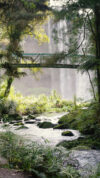Alle Downloads der Kategorie
Ludwigs et al. (2019) Calculating realistic long term PT values for wildlife risk assessment insights from telemetry field studies
The current EFSA guidance document (GD) on risk assessment for birds and mammals (2009) assumes, if no specific data are available, that animals feed exclusively on pesticide treated fields.
Hahne et al. (2019) New proposed Residues on Fruits (RUD’s) for frugivorescenarios in EFSA Bird and Mammal Risk Assessment
The Guidance Document on Risk Assessment for Birds and Mammals (EFSA 2009) provides default ‘Residue per unit dose’ or RUD values for food items to be used in wild life risk assessments. Most of these RUD values are based on large numbers of registration relevant residue studies conducted by industry members and provided to EFSA.
Montinaro et al. (2019) Telemetry of sand lizards (Lacerta agilis) in vineyards – Are methods established for terrestrial vertebrate risk assessments effective in recording higher tier data for reptiles?
Habitats bordering vineyards represent primary habitats for reptiles. This taxon can become exposed when foraging between vineyards, where pesticide application is frequent. EFSA (2018) suggests the sand lizard as a focal species to represent other lacertids living in agricultural land.
Laucht et al. (2019) Vole field effect studies for ERA refinement at higher tiers How many voles are enough
The current EFSA bird and mammal guidance 2009 gives advice on how potential adverse effects of pesticides on wild vertebrates can be assessed One option for higher tier assessments is to conduct field effect studies to monitor potential acute or long term effects on small mammal populations using a capture mark recapture design However,
Blanckenhagen, Reichert, Nickisch (2019) Beyond SFO? Residue decline on food in birds & mammals risk assessments
For wildlife risk assessments, the Guidance Document on Risk Assessment for Birds and Mammals (EFSA 2009 provides a default DT 50 of 10 days for food items like arthropods and vegetation. It also offers refinement options for higher tier birds and mammals risk assessments.
Nikisch, Mediancev, Jakoby (2018) RIFCON EasyGUTS: User-friendly and freely available software for TK/TD modelling of survival
GUTS (General Unified Threshold model of Survival) is one of the most commonly used models for toxicokinetic and toxicodynamic evaluations of aquatic experiments in the context of the European registration of plant protection products at lower tiers in the ecotoxicological risk assessment.
Nikisch, Wittwer (2018) Population dynamics of a soil arthropod simulated using an individual based population model and established fate model data
Many of the available ecotoxicological models deal with protection goals that address field populations. Effect models are often stochastic and spatially explicit. This however makes these models more complex in comparison to the established deterministic exposure models and therefore considerable effort is needed for their verification, validation and comprehensive communication.
Montinaro, Grimm, Ludwigs (2018) Telemetry study on the common toad (Bufo bufo) during postbreeding migration through cereal fields in Germany
The recent Scientific Opinion on the state of the science on pesticide risk assessment for amphibians and reptiles (EFSA 2018) points out the need to collect more data on the ecology of amphibians to reduce uncertainties when assessing the potential risks associated with exposure to pesticides.
Montinaro et al. (2018) Telemetry of sand lizards (Lacerta agilis) in vineyards – Are methods established for terrestrial vertebrate risk assessments effective in recording higher tier data for reptiles?
Habitats bordering vineyards represent primary habitats for reptiles. This taxon can become exposed when foraging between vineyards, where pesticide application is frequent. EFSA (2018) suggests the sand lizard as a focal species to represent other lacertids living in agricultural land.
Alscher, Hecht-Rost, Lückmann (2017) On the way to a new guideline: Results of three years of bumble bee semi-field testing
According to the EFSA Guidance Document on bees (EFSA, 2013), not only honey bees but also bumble bees should be considered in the risk assessment of plant protection products. Up to now, no official guideline for standardised semi-field trials is available to assess effects on bumble bees.
Nikisch, Lutz (2017) EasyGUTS Running R GUTS scripts in a Windows® based software
We developed a Windows® software to manipulate and run R GUTS scripts for the evaluation of surface water exposure profiles calculated with the environmental fate model FOCUS TOXSWA 4.4.3.
Blanckenhagen (2017) Enclosure set up: a well-known system as a new semi-field approach for risk assessment of plant protection products on common voles
Within the EFSA (2009) guided registration of pesticides, the risk assessment for small herbivorous mammals is an all-crop scenario, which often fails to reach the trigger indicating a safe use, even with the higher tier approach. For supporting ‘weight of evidence’ approaches, EFSA (2009) recommends field effect studies or population modelling.


